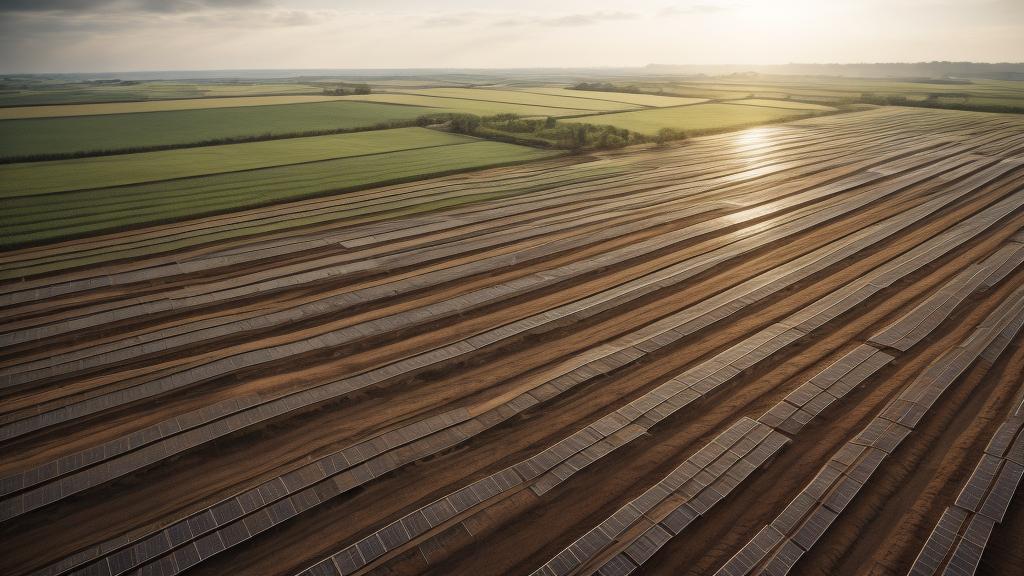In the vast and ever-evolving world of renewable energy, a harmonious union is forming between two seemingly disparate fields: agriculture and solar power. Known as agrivoltaics, this innovative approach seeks to capitalize on the synergy between solar panels and farmland, and it's gaining traction as a viable solution to some of the most pressing challenges facing our planet today.
Traditionally, solar farms and agricultural lands have been viewed as competing entities in the quest for land use. However, agrivoltaics turns this notion on its head, transforming competition into collaboration. This strategy involves installing solar panels above crops, allowing for the simultaneous production of food and energy without sacrificing precious land resources.
The concept of agrivoltaics is deceptively simple: crops are grown beneath solar panels raised to allow sunlight to reach the plants while capturing the excess to generate electricity. This not only increases land efficiency but also provides a host of additional benefits. For farmers, agrivoltaics offers a way to diversify their income by selling solar power alongside their traditional agricultural produce. The shade provided by the panels can also protect plants from sun damage and reduce water evaporation, potentially leading to more sustainable farming practices.
Beyond economic gains, agrivoltaics encourages resilience. In regions prone to climate variability, where unpredictable weather patterns threaten both harvests and livelihoods, agrivoltaics can act as a buffer. During droughts or heatwaves, the shade from solar panels can create a microclimate favorable to certain types of crops, mitigating loss and ensuring a measure of food security.
Globally, the interest in agrivoltaics is surging, with projects popping up from Europe to Asia. In Germany, for example, pilot projects have been underway for years, demonstrating the model's feasibility and scalability. In Japan, where farmland is limited and energy needs are high, agrivoltaics is seen as a promising strategy to address energy shortfalls while sustaining agricultural output.
Despite its potential, agrivoltaics is not without challenges. Initial setup costs can be prohibitive for small-scale farmers, and the integration of solar infrastructure with farming equipment requires careful planning and flexibility. Additionally, the long-term impacts on different crop types under varying environmental conditions are still being studied, necessitating further research.
To overcome these hurdles, initiatives and policy support are crucial. Governments and private entities can play a pivotal role by providing financial incentives, grants, or subsidies to offset installation costs. Educational campaigns can also raise awareness and promote acceptance of agrivoltaics as a mainstream practice.
Innovation, after all, thrives on collaboration. Engineers, farmers, scientists, and policymakers must work together, pooling their expertise to refine and optimize this emerging practice. By sharing data and insights across borders, they can accelerate the development of agrivoltaic systems that are not only efficient but also adaptable to different geographical and climatological contexts.
The dawn of agrivoltaics signals a new chapter for solar power and agriculture alike. It challenges us to rethink conventional approaches to energy and food production and to embrace sustainable practices that honor the lands providing for us. In these fields of innovation lies the potential to cultivate a renewable future—one where technology and nature are partners in securing a thriving planet for generations to come.
The untapped potential of agrivoltaics: merging solar energy and agriculture

